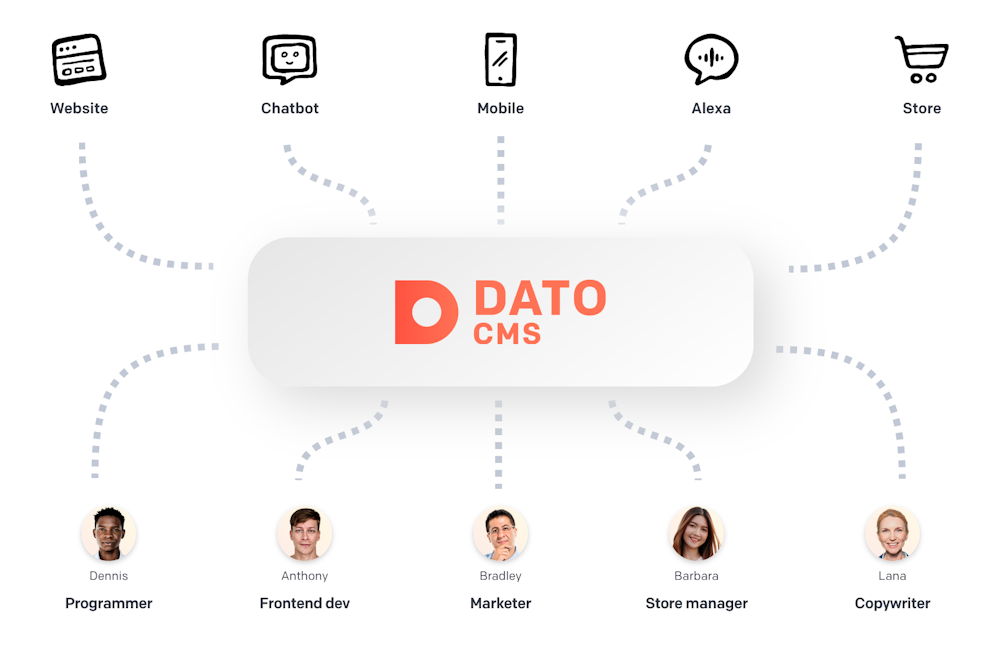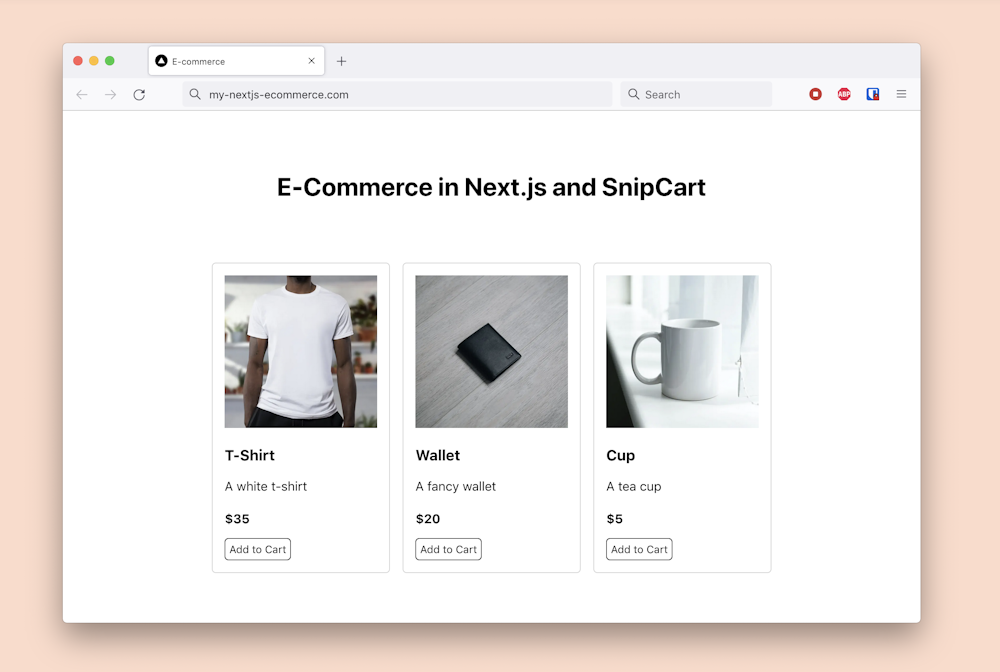In the past, businesses wanted to have full control over all aspects of the software, and this is because they were used to adopting custom applications that ran on their own network. But such a technology approach leads to legacy applications that are difficult to use, maintain, and evolve. As a result, organizations now prefer to choose the best technologies on the market to compose a better and more performing product. And this is what composable architecture is all about. Let’s now delve into this approach to creating a technology stack, and use some composable architecture examples in order to learn everything you need to know about it.
What Is Composable Architecture?
Composable architecture is about choosing and adopting the best-of-breed technology solutions on the market. In other words, a business adopting a composable architecture selects the best elements it needs from all available services and platforms.
In the past, companies adopted enterprise suites or custom solutions built to meet their needs, but keeping those monolithic applications up to date is not easy. This is why such an approach is no longer the safer choice it used to be. On the contrary, composable architecture is against monolithic software suites hosted on local networks, and it encourages adopting top-notch technologies publicly available through the Internet. A few weeks ago, we talked at length about the pros and cons of the headless solution vs a traditional one.
This shift happened with the rise of the microservices approaches and the modern frontend frameworks. And this consequently has led to the diffusion of advanced SaaS (Software as a Service) solutions, which are can now be integrated together with little effort and coding. Thus, composable architecture allows your business to create build faster, safer, richer, more robust, and more reliable digital experiences almost effortlessly, especially compared to the traditional approach to enterprise software.
But none of this would be possible without APIs (Application Programming Interface), which allow you to connect the solutions chosen to implement a composable approach. Let's delve deeper into this aspect.

Composable Architecture Through an API-Based Approach
As you have just learned, a composable technology stack consists of an ecosystem of several individual systems and services. Your goal here is to connect them all to give birth to a cohesive platform, and this would be impossible without APIs.
In detail, such SaaS solutions come with a set of APIs that allows you to retrieve the desired data and provide them with it. In other terms, APIs are what allow you to make your best-of-breed technology components communicate with each other. Generally, SaaS solutions offer detailed documentation to help you integrate your APIs easily and quickly.
This also means that the composable approach gives your business the opportunity to react quickly to the market. All you have to do is subscribe to a new service and take advantage of its features offered through its APIs. This is the real power of SaaS and its API-centric paradigm, which enables your company to reorient and rearrange rapidly when new needs emerge. If your customers want a new feature, you do not have to build from scratch, but you can use one of the several online services available.
This is one of the most important reasons why you should embrace a composable approach, but let’s look at them all.
Why Adopt Composable Architecture?
Today, winning and forward-looking businesses tend to focus on building solutions based on rich, advanced, and modern web experiences. What these companies do is adopt the most innovative technologies and put the end-user experience at the center, especially when it comes to an omnichannel approach.
As you can imagine, an old, slow-to-evolve, cumbersome monolithic suite cannot be helpful here. This is because it is unlikely to offer what your teams need to keep up with the constantly evolving needs of your customers. Instead, going composable makes delivering new features easier and faster.
In this regard, Gartner predicts that by 2023, companies that opted for a composable technology stack will be able to release new features to the market 80% faster than their competitors who adopted a suite or a custom application. This is a number that cannot be overlooked.
Plus, composable architecture is about decoupling and separation of concerns. This means that each team can form a small unit focusing on what really matters, allowing your business to thrive. This latter aspect of composable architecture is possible thanks to the headless paradigm.
Let’s find out why.
How To Implement Composable Architecture with Headless Applications
Headless applications come with no front-end. As opposed to monolithic solutions, they provide you with only what you require for content management. So, they represent a single source of truth, whose data can be retrieved through APIs and presented in different ways according to your needs. Find out more about this concept, in our article on the multi-site approach.
Such a paradigm enables your front-end development team to focus on the UI (User Interface) and UX (User Experience) without having to deal with all the limitations coming with monolithic solutions. Your team can take advantage of the most recent and advanced front-end technologies while letting the marketing team manage the content in the headless platform. This is just one of the several benefits of content as a service that you could have by embracing a headless CMS, for example.
As you can imagine, this is a win-win scenario! Moreover, implementing composable architecture can be achieved rather easily.
All you need to do is go headless, and a headless CMS like DatoCMS can help you do that.

How DatoCMS Can Help You Achieve Composable Architecture
As explained above, headless solutions like DatoCMS help you achieve composable architecture. In detail, by using its content delivery API system, you can integrate DatoCMS into your platform seamlessly, and start taking advantage of its top-notch content management features designed with developers, marketers, and content creators in mind.
Composable by design
DatoCMS is inherently composable because it supports hundreds of plugins developed by the community. This means that anyone can add their own features and make them available to the entire community. Check out all plugins available here.
A world of integrations
DatoCMS is already a partner with top-notch SaaS companies such as Imgix, MUX, and Cloudfare, to provide the most complete and performing service on the market.
Also, DatoCMS can also be easily integrated with all the available hosting services or enterprise applications. In detail, by connecting DatoCMS to one of the supported hosting services, you can use DatoCMS to trigger a build and receive notifications on the status result.
Enterprise ready
DatoCMS was designed with enterprise needs in mind. Security, and data protection is guaranteed by top-notch services such AWS, Salesforce, Azure, and Okta. In this way, you can secure your data, centralize user management and asset storage using privately owned instances.

Let’s now see DatoCMS in action in a composable architecture approach through some examples.
Composable Architecture Examples
Here is a list of some demo applications that can simply and quickly give you a composable architecture example.
Blog
DatoCMS is the perfect solution when it comes to content management. You are free to display and use this content however you like, for example in a blog. Again, you can choose the frontend technology you prefer, such as Next.js, Gatsby, or Remix. These technologies will then allow you to integrate other services through their APIs.
DatoCMS blog templates are the simplest example of a small-scale composable architecture:
All DatoCMS blog templates come with the following integrations by default:
Deployment platforms, like Vercel or Netlify
Asset management services, Imgix and MUX video.
Caching service provided by Cloudflare.
Ecommerce examples
With a headless solution like DatoCMS, you can build an ecommerce platform with a top-notch frontend technology.
You can integrate many other components and online services to build your ecommerce with no effort, as we did with Snipcart in the examples below.
All DatoCMS ecommerce templates have the following integrations by default:
Snipcart: shopping cart platform
Deployment platforms, like Vercel or Netlify
Asset management services, Imgix and MUX video.
Caching service provided by Cloudflare.

Conclusion
In this article, we learned what composable architecture means and why each business looking for a competitive edge should adopt it. The market is simply evolving too fast for the enterprise and custom solutions to keep up, and this is why you should adopt the best technologies according to your needs and integrate them through their APIs. This is what the composable approach to building a technology stack is about. And here we delved into how to implement it with headless solutions, just like DatoCMS.
Thanks for reading! We hope that you found this article helpful. Feel free to reach out to us on Twitter with any questions, comments, or suggestions.
